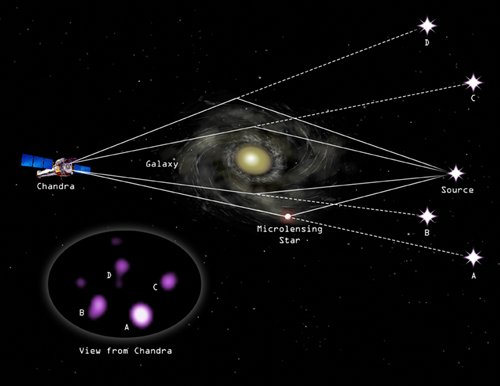Cloverleaf Quasar (a.k.a. H1413+117): Four images of a gravitationally lensed quasar 11 billion light years from Earth.
(X-ray: NASA/CXC/Penn State/G.Chartas et al; Illustration: NASA/CXC/M.Weiss)
Caption: The Cloverleaf quasar is a single object whose image has been reproduced four times in a cloverleaf-like arrangement through a process known as gravitational lensing. The gravitational field of one or more foreground galaxies has bent and magnified the light from the quasar to produce the multiple images. The foreground galaxies are too faint to be seen in these images. Note that the image on the lower right (A) is much brighter in X-rays than optical light. This is due to an effect called gravitational microlensing, wherein a star or binary star system in one of the intervening galaxies passes directly in front of the small, X-ray producing region around the quasar's supermassive black hole. The optical light comes from a much larger region, so it is not magnified by the passing star or stars. X-ray microlensing gives astronomers a new and extremely precise probe of the gas flow around the supermassive black hole.
Scale: Inset is 2 arcsec across
Chandra X-ray Observatory ACIS Image
|


